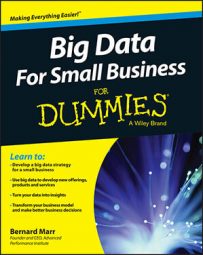Data should be at the heart of strategic decision making in business, whether you run a huge multinational or a small family-run business. Big data can provide insights that help you answer your key business questions, such as ‘How can I improve customer satisfaction?’. Data leads to insights; business owners and managers can turn those insights into decisions and actions that improve the business.
Use this ten-step process for making data-based decisions:
-
Start with strategy.
Instead of starting with what data you could or should access, start by working out what your business is looking to achieve. In a nutshell, you need to work out what your strategic goals are, for example, increasing your customer base.
-
Hone in on the business area; identify your strategic objectives.
Identify the areas most important to achieving your overall strategy. For most businesses, the customer, finance and operations areas are key.
-
Identify unanswered questions.
Work out which questions you need to answer in order to achieve those goals. By working out exactly what you need to know, you can focus on the data that you really need.
-
Find the data that will help answer those questions.
Focus on identifying the ideal data for you – the data that could help you answer your most pressing questions and deliver on your strategic objectives.
-
Identify what data you already have or have access to.
After you identify the data you need, it makes sense to see if you’re already sitting on some of that information, even if it isn’t immediately obvious.
-
Work out if the costs and effort are justified.
Only after you know the costs can you work out if the tangible benefits outweigh those costs. In this respect, you should treat data like any other key business investment. You need to make a clear case for the investment that outlines the long-term value of data to the business strategy.
-
Collect the data.
Much of this step comes down to setting up the processes and people to gather and manage your data. You may be buying access to an analysis-ready data set, in which case there’s no need to collect data as such. But, in reality, many data projects require some amount of data collection.
-
Analyse the data.
You need to analyse the data in order to extract meaningful and useful business insights. After all, there’s no point coming this far if you don’t then discover something new from the data.
-
Present and distribute the insights.
Unless the results are presented to the right people at the right time in a meaningful way, then the size of the data sets or the sophistication of the analytics tools don’t really matter. You need to make sure the insights gained from your data are used to inform decision making and, ultimately, improve performance.
-
Incorporate the learning into the business.
Finally, you need to apply the insights from the data to your decision making, making the decisions that will transform your business for the better – and then acting on those decisions. For me, this is the most rewarding part of the data journey: turning data into action.

